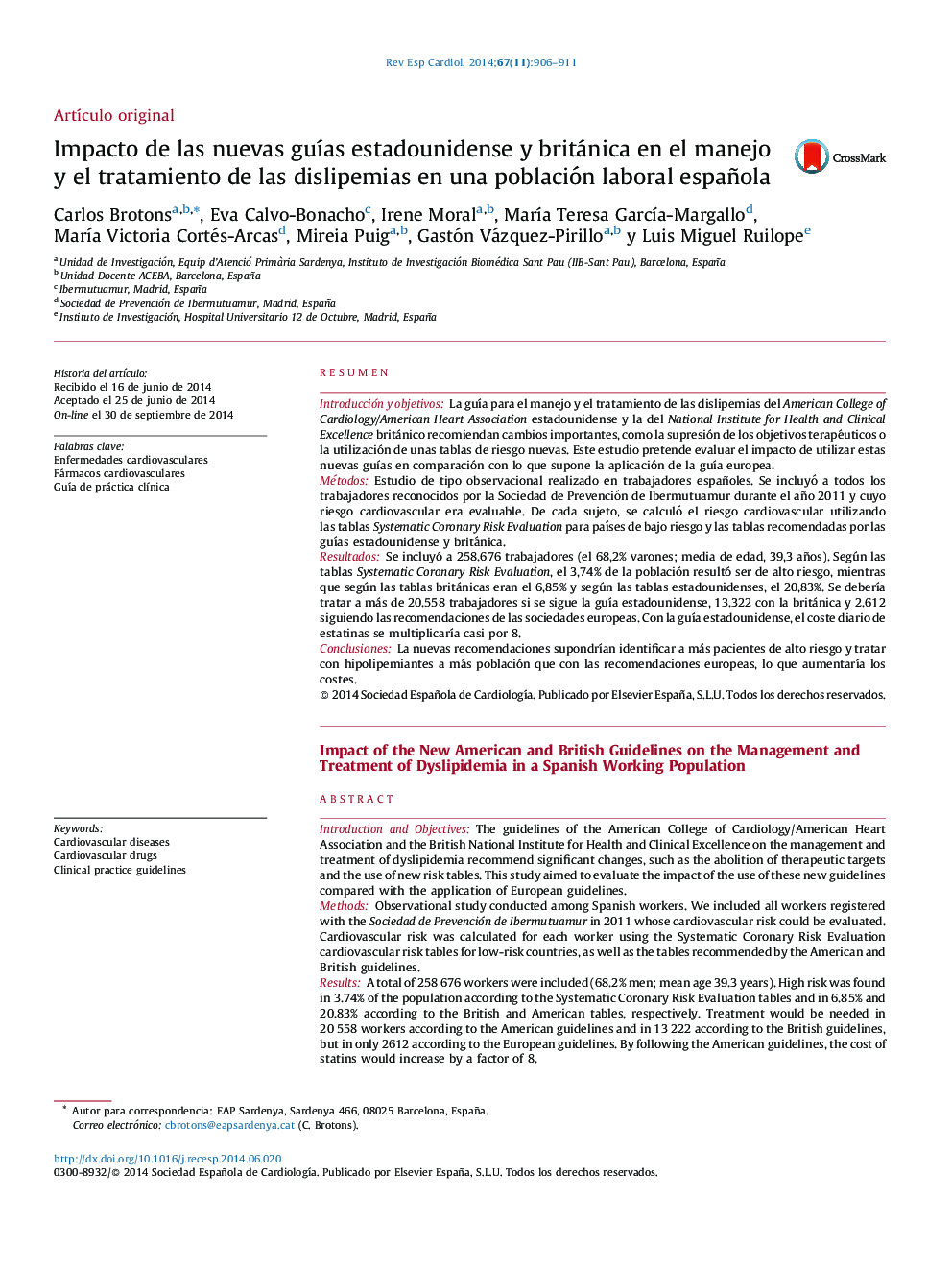| کد مقاله | کد نشریه | سال انتشار | مقاله انگلیسی | نسخه تمام متن |
|---|---|---|---|---|
| 3013566 | 1181858 | 2014 | 6 صفحه PDF | دانلود رایگان |
ResumenIntroducción y objetivosLa guía para el manejo y el tratamiento de las dislipemias del American College of Cardiology/American Heart Association estadounidense y la del National Institute for Health and Clinical Excellence británico recomiendan cambios importantes, como la supresión de los objetivos terapéuticos o la utilización de unas tablas de riesgo nuevas. Este estudio pretende evaluar el impacto de utilizar estas nuevas guías en comparación con lo que supone la aplicación de la guía europea.MétodosEstudio de tipo observacional realizado en trabajadores españoles. Se incluyó a todos los trabajadores reconocidos por la Sociedad de Prevención de Ibermutuamur durante el año 2011 y cuyo riesgo cardiovascular era evaluable. De cada sujeto, se calculó el riesgo cardiovascular utilizando las tablas Systematic Coronary Risk Evaluation para países de bajo riesgo y las tablas recomendadas por las guías estadounidense y británica.ResultadosSe incluyó a 258.676 trabajadores (el 68,2% varones; media de edad, 39,3 años). Según las tablas Systematic Coronary Risk Evaluation, el 3,74% de la población resultó ser de alto riesgo, mientras que según las tablas británicas eran el 6,85% y según las tablas estadounidenses, el 20,83%. Se debería tratar a más de 20.558 trabajadores si se sigue la guía estadounidense, 13.322 con la británica y 2.612 siguiendo las recomendaciones de las sociedades europeas. Con la guía estadounidense, el coste diario de estatinas se multiplicaría casi por 8.ConclusionesLa nuevas recomendaciones supondrían identificar a más pacientes de alto riesgo y tratar con hipolipemiantes a más población que con las recomendaciones europeas, lo que aumentaría los costes.
Introduction and ObjectivesThe guidelines of the American College of Cardiology/American Heart Association and the British National Institute for Health and Clinical Excellence on the management and treatment of dyslipidemia recommend significant changes, such as the abolition of therapeutic targets and the use of new risk tables. This study aimed to evaluate the impact of the use of these new guidelines compared with the application of European guidelines.MethodsObservational study conducted among Spanish workers. We included all workers registered with the Sociedad de Prevención de Ibermutuamur in 2011 whose cardiovascular risk could be evaluated. Cardiovascular risk was calculated for each worker using the Systematic Coronary Risk Evaluation cardiovascular risk tables for low-risk countries, as well as the tables recommended by the American and British guidelines.ResultsA total of 258 676 workers were included (68.2% men; mean age 39.3 years). High risk was found in 3.74% of the population according to the Systematic Coronary Risk Evaluation tables and in 6.85% and 20.83% according to the British and American tables, respectively. Treatment would be needed in 20 558 workers according to the American guidelines and in 13 222 according to the British guidelines, but in only 2612 according to the European guidelines. By following the American guidelines, the cost of statins would increase by a factor of 8.ConclusionsThe new recommendations would result in identifying more high-risk patients and in treating a larger fraction of the population with lipid-lowering drugs than with the European recommendations, which would result in increased costs.Full English text available from:www.revespcardiol.org/en
Journal: Revista Española de Cardiología - Volume 67, Issue 11, November 2014, Pages 906–911
